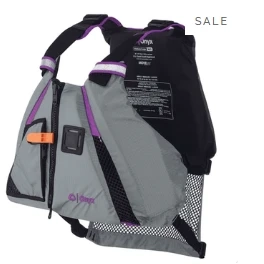Canada's vast and beautiful landscapes offer endless opportunities for outdoor adventures, especially on the water. Whether you're cruising on a boat, paddling a kayak, or trying your hand at water skiing, safety should always be a top priority. One essential piece of safety equipment that every water enthusiast should have is a reliable life jacket. In this comprehensive guide, we'll explore everything you need to know about life jackets in Canada, including their importance, types, regulations, and top tips for staying safe on the water.
The Importance of Life Jackets:
Life jackets, also known as personal flotation devices (PFDs), are crucial for water safety. They are designed to keep you afloat in the water, even if you're unconscious. In Canada, wearing a life jacket is not only a smart choice but often a legal requirement. According to Transport Canada, all boaters must have a Canadian-approved life jacket or PFD on board for each person.
Types of Life Jackets:
There are several types of life jackets available, each designed for different activities and water conditions. The most common types include:
Type I: Offshore Life Jackets - These are designed for rough or remote waters, providing the highest level of buoyancy and visibility.
Type II: Near-Shore Vests - These are suitable for calm, inland waters where rescue is likely to be quick.
Type III: Flotation Aids - These are ideal for activities like kayaking, canoeing, and paddleboarding, providing freedom of movement and comfort.
Type IV: Throwable Devices - These include buoyant cushions or ring buoys and are meant to be thrown to someone in the water.
Type V: Special-Use Devices - These are designed for specific activities like water skiing, windsurfing, or kayaking and often provide more features tailored to those activities.
Regulations and Requirements:
In Canada, life jacket regulations vary depending on the province or territory and the type of watercraft. However, there are some general guidelines to keep in mind:
All boats must have a Canadian-approved life jacket or PFD for each person on board.Children under a certain age (typically 12 years old) must wear a life jacket at all times while on board a boat.Life jackets must be the appropriate size for the wearer and in good condition.Inflatable life jackets are not approved for use by children under 16 years old or in certain high-risk situations.Top Tips for Staying Safe on the Water:
Always wear a life jacket that is the right size and type for your activity.Inspect your life jacket regularly for any signs of wear or damage.Ensure everyone on board knows where the life jackets are stored and how to put them on.Avoid consuming alcohol while boating, as it impairs judgment and coordination.Be aware of weather conditions and water currents before heading out.Conclusion:
Life jackets are an essential piece of equipment for anyone who enjoys spending time on the water in Canada. By choosing the right type of life jacket, following regulations, and practicing safe boating habits, you can ensure a fun and safe experience on Canada's beautiful waterways. Remember, wearing a life jacket can save your life, so always wear it, and stay safe on the water!


